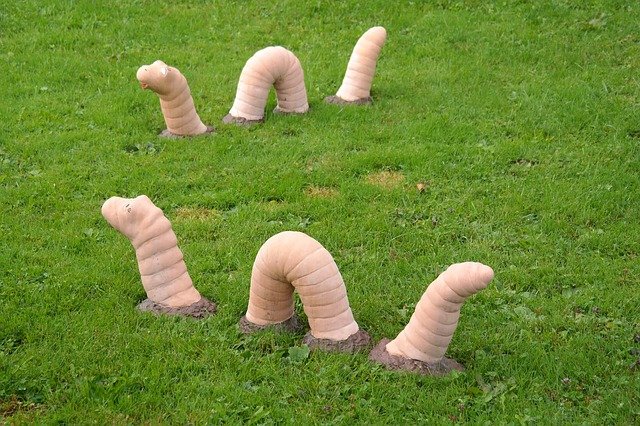Showcase: She Ran + She Did It + A Story About A Worm
October’s Showcases are introduced by Pen to Print and Write On! regular Michelle Sutton.
October is a special month to me. A month of change, when autumnal colours begin to show themselves and a chill in the air promises something’s around the corner. By the end of the month, the clocks go back and Halloween allows for the spooky, strange and weird to become mundane. It’s also my birthday, so I have good feelings about it. Then there are the darker ones.
October is Mental Health Month and, as someone who lives with my own mental health issues, this time of year is hard. SAD rears its ugly head and that gnawing at the back of my brain bites firmer. I’m reminded that this was the time of year I suffered a nasty knee injury during a football match over ten years ago, and the joint twinges more as the date draws nearer.
We don’t talk about Mental Health enough, or as openly, as perhaps we should. There’s still a fear, a shame, a denial. People tiptoe around the subject, not wanting to cause ‘upset’, but sometimes all you need to do is listen. With many people’s mental health affected by COVID-19, lockdowns and the climate crisis, we really should be talking about it more than ever.
Today’s showcase falls on World Cerebral Palsy day, which brings me to our first piece.
Lauren Towers is my friend and writing partner (our shared pseudonym is L.M. Towton). She has cerebral palsy, affecting three limbs and her balance, and suffers from anxiety, depression, chronic pain and chronic fatigue syndrome. While open and honest about all of them, to try to help remove the stigma and encourage others to talk and get better, Lauren never writes about them in fiction. Sometimes a character might have their own problems, but this is entirely different. Instead, she prefers to write about dragons or hidden islands, escaping from ‘write what you know’, so as not to write about the pain, limitations, self-hatred and feelings of worthlessness that come with it. It might seem hypocritical, but I’m sure many can relate.
This flash piece from Lauren has undercurrents of mental health issues and, I think, reflects the inner turmoil depression and anxiety can conjure. Sometimes in a physical, if imaginary, form.
She Ran

She ran.
She wasn’t sure what she was running from. Just that it didn’t smell like a person. It smelled like it might have been once, a really long time ago. Maybe. What she did know was that the company pass-card around her neck gave her access to any building they owned – and there was one nearby. The one she worked in most days was around the next bend.
She risked a glance behind. It was still coming. It looked just like a man, with a determined gait and somewhere important to be. He wasn’t moving fast enough to draw attention to himself; unlike her. She slammed into people as she ran, eliciting abuse and anger. No one else seemed to notice the man coming after her was essentially dead. No one tried to stop him or slow him down. They just moved aside without a murmur.
Her body slammed into the glass door as she missed the electronic touchpad in her panic. The security guard glanced up, recognised her and waved. He ambled over with a look of confusion on his face, frowning in concern at her obvious distress.
“Not supposed to let you in on a Saturday night. All shut down for the weekend.”
His voice was muffled by the door. He jumped as she thumped it with her fist, her breathing – too ragged to allow her to form words – fogged the glass. He faltered under the weight of her desperation and bleeped open the door.
She hurtled in and yanked the door shut behind her, just as the dead thing caught up. Its hand, so human-looking, clunked as it hit the glass with such force it should have broken bones. It didn’t even flinch. It reacted like an animal in front of a mirror, continuing to attack the reinforced glass, as if keeping going would somehow make a dent eventually.
She watched, momentarily triumphant, until the security man lumbered off, muttering about calling the police and tasers. Not once glancing at the thing clawing at the door but side-eyeing her instead.
This was not going to end well.
© Lauren Towers, 2018
You can connect with Lauren on her personal Twitter: @100voicess and our joint one: @LM_Towton
As someone who suffers from anxiety – especially social anxiety – this externalised panic and the need to run from things only you can see or feel is something I deal with internally on a constant basis. It can be tough. I also like that this piece reflects Lauren’s, and others’, experience of ‘the glass wall’ as a coping device. In her own words: “Everything feels like it’s being heard through filters, echoey speakers, where it’s all just a little bit delayed, while your panicking brain tries to figure out if what’s being spoken is a negative reply to something you’ve said, done or even thought.”
*****
Sticking with Mental Health Month, the next piece I’d like to share is a poem from Diya Padiyar.
She Did It!
She was a bird,
meant to set free.
Yet, she felt caged
on her own tree.
Her days felt tired and
her nights felt sick.
Her own breath to her,
now felt claustrophobic.
She felt a tremor,
She sought the armour,
To end this stigma,
To combat her trauma,
She wanted to break
the bars of silence.
She wanted to win back
her resilience.
She did it! By bursting the myths.
She did it! By strengthening her wits.
She did it! By seeking the right help.
She did it! By caring for mental health.
© Diya Padiyar, 2021
You can connect with Diya on Instagram: @teenagerwritings
The trapped and claustrophobic start to the poem, along with its title, had me initially wondering which way it was going. Thankfully, it ended on a happy note. Unfortunately, many people who suffer from mental health issues aren’t as lucky as the subject of Diya’s poem. Hopefully, as more awareness is raised, more people will be able to receive the help they need.
*****
Finally, to end the first of October’s showcases, here is a story from Jo Renton, about a worm called Wally. International Fossil Day is next week, so I thought this piece fitted quite well and maybe, if you’re walking along a chalk cliff in the future, you’ll think about Wally.
A Story About A Worm

Wally stretched out in his spacious, comfortable burrow, which extended at least five metres beneath the tropical ocean floor. Another wonderfully idle day had begun, when all he had to do was to concentrate on finding enough food. He would usually breakfast on tiny diatoms as they floated by in their millions, and perhaps for lunch, he would grub around at the bottom of his burrow to find something more substantial. Yes, food was so easy to come by, and he didn’t have to think about it much. Not that he had a lot of scope for thinking or reflection, as brains hadn’t really been invented yet for worms like him.
There was just one problem with his living quarters, and that was the almost constant stench that oozed from below. He was already meticulous in his housekeeping and personal hygiene, so he tried enlarging the opening to his burrow instead, to let in the nice clean seawater from above. That definitely helped with the smell, although it brought its own problems. After too large an influx of fresh seawater, he would start to feel itchy and uncomfortable all over.
Now we won’t worry about trying to explain all this to Wally, because, being a worm of very little brain, he wouldn’t be able to understand it anyway. But, bearing in mind that molecules are the smallest, tiniest group of things that you can possibly imagine, all the little oxygen molecules mixed up in the fresh seawater didn’t like the smell of rotten eggs either. So, they decided to dive right down into the silt among the nasty-smelling molecules which were called hydrogen sulphide, HSO2 for short, and annihilated them. The oxygen molecules now had new friends that they could hang out with: nice, unsmelly friends, and these new groups were called hydrogen sulphate molecules..
But there was still a problem with this new arrangement from Wally’s point of view, because when these new groups of hydrogen sulphate mixed with water, lots of happy little itchy things called hydrogen ions (or were they hydrogen sulphide ions?), were set free. Wally was just then enjoying a nice evening meal of more tiny swimming creatures with a tasty crispy coating, called radiolarian.
Now, where were we? These little ions floating about were really homeless. They had nowhere to live and no other molecules to live with. So they got up to mischief. They decided to make life more interesting and stir things up a bit. They made the water turn a bit acidy which made the animals feel all itchy, which was doubly bad, bearing in mind that most of them had no arms or legs to scratch with. And they made the clear seawater turn so milky, that no one could see where they were going, because of all the dissolved chalk floating around, and the fish bumped into one another. As for Wally, he didn’t have any real eyes anyway. He could just about tell the difference between night and day, but that was all he needed, living deep in his burrow most of the time.
Poor Wally died soon afterwards. He drifted off contentedly, dreaming he had just met a very attractive shrimp-like thalassoid and had invited her to a meal of lovely munchy, crunchy diatoms. Gradually, with time, his five-metre long ribbon-like body shrivelled up leaving just his empty burrow where he had lived so happily. And gradually it filled up with the remains of all the little diatoms and radiolae that Wally had enjoyed so much while he had been alive. It became, in fact, a diatom and radiolarian cemetery where all the tiny dead skeletons of these pretty little creatures drifted into and stayed. Their hard, crunchy bits were made of a substance called silicon, which was another little group of molecules that oxygen liked to hang out with, making silica, or SiO2 for short. In fact, it was amazing how many friends oxygen had and how many different groups oxygen molecules belonged to.
Gradually, the silica molecules packed together ever more tightly, as more and more little silica skeletons tried to cram into the burrow. It had definitely become a most desirable location for the silica skeletons. Silica sponges joined in too, pushing out the sides of the burrow even more. The original width of barely a couple of centimetres was expanded to easily ten times that amount. Then, as time passed, the silica turned harder and harder, until it became quartz, and then harder still, until, at last, 85 million years later, it had become a large nodule of flint embedded in the chalk cliffs we see today.
I think I had forgotten to tell you at the beginning of this story that Wally’s real name was Mr B. Paramoudra, although he always preferred to be called Wally. He lived and died 85 million years ago, in the silty ooze 100 metres under tropical, relatively shallow seas, which covered not only Thanet in south east England, but most of Europe at that time.
It’s also important to realise that Wally was not really alone, as he had lots of friends and relatives living in the same stretch of soft oozy silt of so long ago, which, with time, underwent exactly the same changes as Wally’s. This is why flints mostly form whole layers in the chalk. So, next time you pick up a large, knobbly piece of flint, allow yourself to imagine how Wally used the space in his burrow. He might have had separate spaces for sleeping and eating, and perhaps even a larder. We will never know, of course, but it is fun to imagine!
© Jo Renton, 2021
*****
If you’d like to see your writing appear in the Write On! Showcase, please send your short stories, poetry or novel extracts to pentoprint@lbbd.gov.uk.
You can read more fiction, poetry, interviews and author advice in the latest issue of Write On! Issue 10 of Write On! is available now. You can see it here.




